Edward Berger‘s All Quiet on the Western Front is one of the films nominated in the Visual Effects category at the Oscars that some might not even realize has visual effects since the work by Visual Effects Supervisor Frank Petzold and his team is often imperceptible compared to the movies that are normally nominated in that category.
Petzold has been working in visual effects for nearly 25 years, which includes a 10-year stint working at Tippett Studio with legendary visual effects master Phil Tippett on many VFX-heavy films, including Paul Verhoeven‘s Starship Troopers and Hollow Man, as well as the 2007 movie The Golden Compass. His foray into television began with AMC’s The Terror, which is where Petzold had the good fortune to meet Berger. That series ultimately led Petzold to handle visual effects for All Quiet on the Western Front, which is up for nine Academy Awards this month.
Below the Line hopped on Zoom with Petzold to discuss the very specific work done to help create the World War I warzone that Berger needed to give All Quiet for audiences to feel the full impact of his anti-war drama, which is now streaming on Netflix. (You can watch a short clip showing the breakdown of the VFX work on the film at the bottom of this feature.)
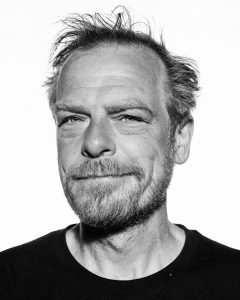
Below the Line: Congratulations on your Oscar nomination. I’m not sure if you consider your work supporting VFX, but it’s certainly not like Avatar: The Way of Water, where there are entire scenes that are fully CG.
Frank Petzold: Thank you. VFX is a huge spectrum, so you have Avatar on one side. It’s really [whatever] you require for the material.
BTL: I’m not sure how many people realize that VFX are used in almost every movie, right down to the smallest independent films. Having worked with Edward Berger before on The Terror, I’m curious when he told you about this project, as I think he mentioned working on it for close to three years.
Petzold: If I recall right, he wrote me an email. I think it must have been around September or August [of] 2021. It was basically really short, just like, ‘Hey, I got a script. Do you want to get the band back together?’ Because you’re right, we did The Terror together. At first, he didn’t tell me what the script was, and then I got the first workable pass of the script. It was a big “gulp!” reading this, because usually, you look at a script, and, particularly for VFX, you have the images in your head right away. You think about technology, and how much it’s going to cost and how long it’s going to take.
This was one of those scripts I had to read three or four times before I was even thinking about VFX, because it couldn’t just be another spectacle. I think that was the biggest challenge. And then we met, and our first discussion was, ‘Okay, we all have to get together and [story]board it, and think about who can do what, [and] whether everything is VFX? Or can we do half and half? How much can the art department do?’
You have those usual discussions, but usually, it’s much more defined or clearer when you have fantastic movies that have impossible shots. Of course, there were certain things that were unpredictable. Even in the planning, it’s like, “How’s this battlefield going to behave? What happens if it rains for a week straight? Can you even put a dolly somewhere?” All [of] those things, we had to prepare ahead of time to be able to react in post if it didn’t work. That’s what we did, and we slowly pieced it together.
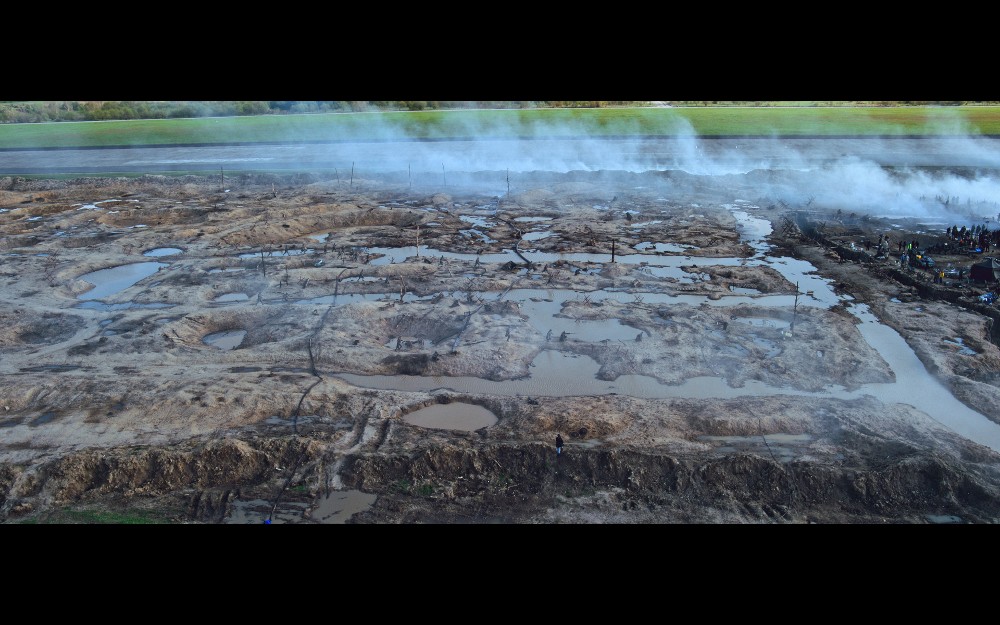
BTL: Incidentally, do you work out of a regular VFX house or are you fully independent? And were you on set the entire time?
Petzold: I used to be at Tippett, but then I became freelance about 15 years ago, as a production freelance supervisor. On this show, we didn’t have a VFX producer, so I did the bidding and looked at shops. I picked UPP in Prague as our major studio simply because I did The Terror with them as well. To me, looking at the script, the requirements for the battlefield seemed to me very similar to putting a green screen ship in the Arctic. I called Victor Miller, and we clicked again right away, thinking about how to do it.
I always like to be on set, all the time, even if it’s non-VFX days, because there’s always something for me to do. Whether it’s photographing reference or shooting elements, stuff that I can use, you never know what becomes a VFX shot in the end, so you want to be prepared. You also want to be there when you discuss the shot. When Edward and James [Friend, the film’s DP ] are brainstorming about the shot, you have to be there and react. “Oh, if you guys want to do that, then we have to do this for my end.” I don’t like it when I get presented with work that I wasn’t at the shoot [for].
By the way, when I spoke to Edward, I’m going to give you a direct quote, he said, ‘When I showed the movie to the VFX company, they watched it and said, you don’t really need anything that works like this.’ Was that you who said that? No. [laughs] Of course, it needed VFX. Otherwise, you’d be looking at… first of all, no tanks, no planes, and everything. What Edward is talking about is that the story works offline. Nowadays, you have films where, without VFX, it doesn’t even make sense. That was the quote.
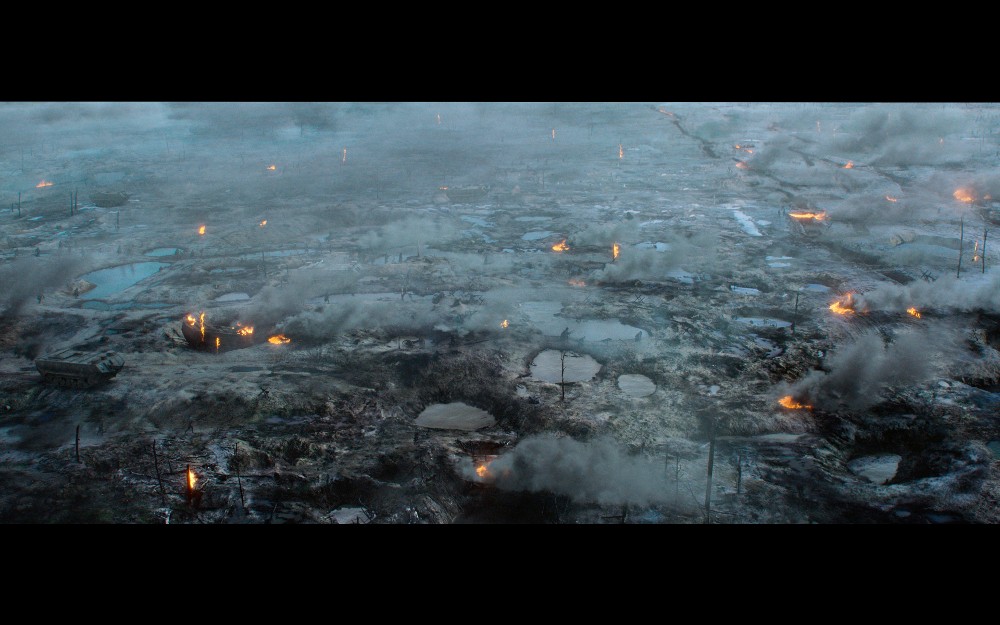
BTL: Edward mentioned that the battlefield set was enormous — over three football fields long. Did you still have to do extensions or get rid of stuff that was far away in the background?
Petzold: There are a few shots where you see extensions because it was quite long. Shooting against the sun in the morning and the evening, you had those long shots. There are a few shots where you’re higher up, and you look at the width of it, and the trenches at some point stopped. The set was huge, and [Production Designer] Christian Goldbeck did a great job tearing this whole place up. I don’t know how long it took him — two, almost three months, just excavating with, I don’t know how many… hundreds of people. The whole place had to be scanned for vintage bombs first. It was an old military airport, and they didn’t know — if we dug down six [or] seven feet — what [we’d] find. I think for a couple [of] weeks, they used a ground radar to sort of scan the whole area, just to make sure there was nothing there.
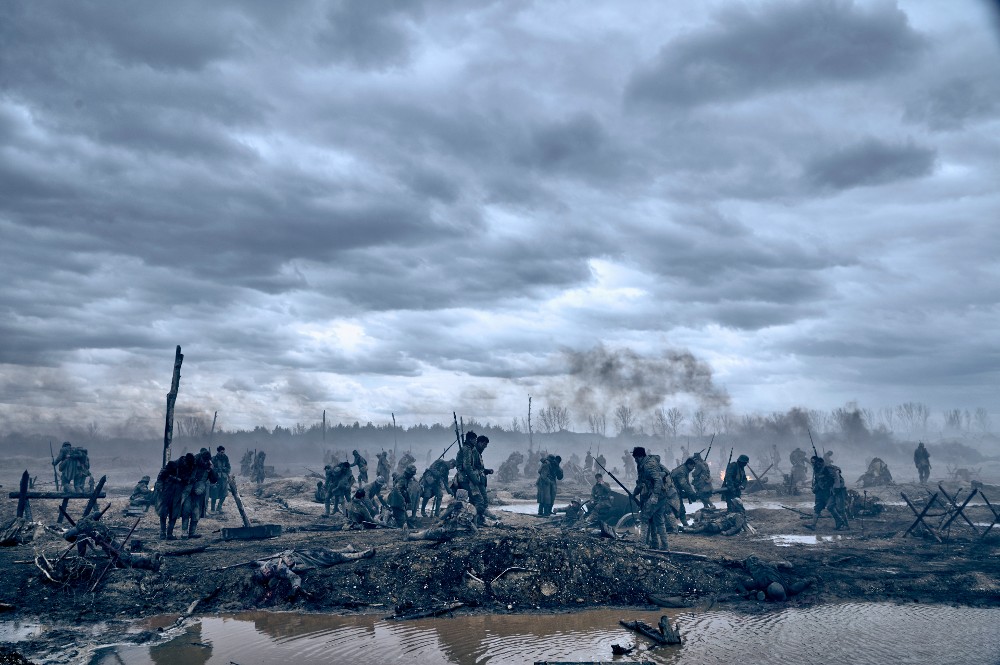
BTL: This was in Prague?
Petzold: It was an hour outside Prague, [in a Czech town] called Milovice. It was an old military airport that was just used for sports flying, so we were able to use a whole runway.
BTL: How big a team did you have with you on set? Did you have people who were shooting plates to make sure you had what you might need later?
Petzold: I have a small crew, and that varies throughout the shoot. Of course, during the battles, I have three people on set [who] gather the camera information. The cameras are so spread out over a great distance, and you have to record the stuff, you have to possibly remap stuff, you have to find positions, lenses, and all that stuff. There’s so much stuff that you have to gather and bring home to the vendors so that they can rebuild the shots. You’re writing down stuff every day, and then you need a helping hand. Of course, there are other days when it’s just two of us.
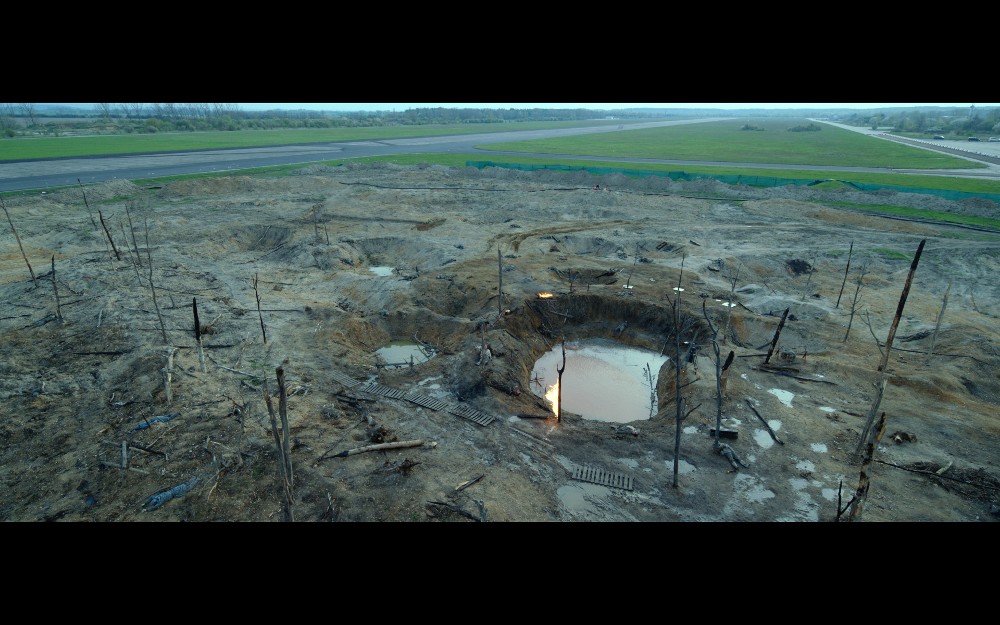
BTL: How closely are you working with James Friend both on set and in post? Obviously, he’s creating the look of the movie, and you want to make sure to retain a certain aesthetic.
Petzold: On set, we were together pretty much every day. You have the video tent where the creative discussions are happening, and I’m usually there. I was there for the grading as well. That’s another thing that I like to attend, not just for the last day but for the whole grading, because the grade can really sometimes mess with your VFX, especially on a movie like this where everything’s very contrast-dependent. You have tanks appear through the fog, and if you play with the contrast or the gamma a little bit, all of a sudden the tank is gone or it’s too present. You basically want to sit there and react, or you notice stuff that hasn’t been done. There were even a handful of shots I was actually able to do on the grading machines, just simple stuff, so it was an all-around effort. For me, the show took about a year and a half, I think, until I really could go, ‘Okay, now we’re done. It’s in the movies now.’

BTL: You said when you read the script, it wasn’t really obvious what would be needed VFX-wise. What did Edward tell you? He said he wanted to try to get the explosions on set and do it all practically, which I think every director tries to do, but obviously, safety is key in order to protect the cast and crew.
Petzold: You have to work with SFX. Of course, you want to do as much in front of the camera. The stuff that I had to put in later, I also wanted to get on set, but just in a different, safe region, as elements. The thing is that, of course, when you shoot [at] an airport, at some point, you see the horizon, and you see the second runway. Trees were a big issue. We didn’t want to see trees, for example. He wanted it to be endless, and then, of course, wounds, and then there are just different little things. There were rats that we needed…
BTL: You mean you added rats, not that you had to remove them from scenes, right?
Petzold: [shakes head] We never had rats on set. It was a potpourri of different things that we had to do. Of course, the battles stood out as being the most complex [with] tons of wounds. For example, when Tjaden kills himself with the fork, there was a lot of work there. We did some blood on set, and sometimes we had to take it away because it was too graphic. [For] some shots, we added some. There was a lot of work on destruction, just making buildings more broken, and we had a good base on-camera, but we wanted to make it really look war-torn.
BTL: There are some scenes in towns, so did you have to remove local McDonald’s and Starbucks and those kinds of hallmarks of modern life?
Petzold: Yeah, the usual, and then, of course, we shot in Prague, and it’s supposed to be Germany. There were a few key points that if you know Germany and Prague, Germans can tell. The art department did a great job with some carefully-placed props, like old cars and stuff like that. I think the school was actually the German Embassy. I’ve never painted out that many security cameras.
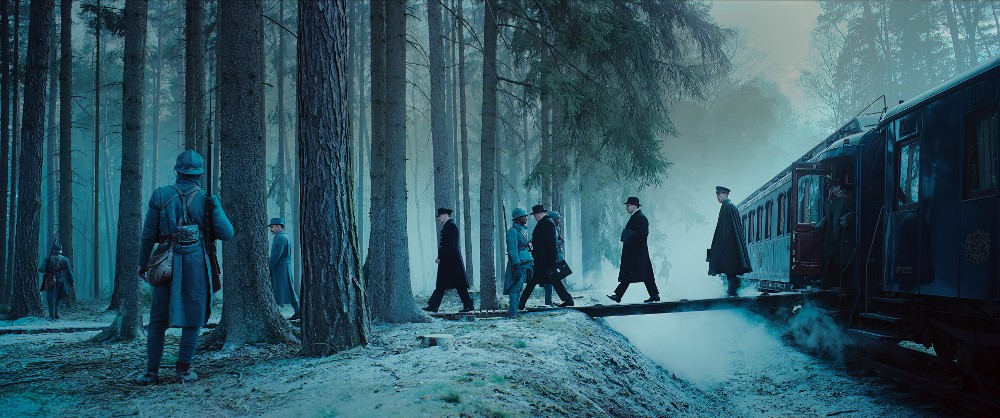
BTL: I noticed that even the guns shot out little puffs of gunpowder when they fired. Was that mostly done with VFX after the fact?
Petzold: That’s the usual problem. It’s the same with muzzle flashes because of the shutter frequency in the camera — sometimes the stuff shows up. Sometimes the guns didn’t go off, especially when it was raining. We added muzzle flashes, and then, in the close-ups, when you don’t see the front of the barrel, we added smoke puffs. Sometimes we did a fake recoil, especially those machine guns. These were vintage machine guns that we used. Sometimes, they worked, and sometimes they just did one shot and then jammed. I reshot all those as elements because I wanted to make sure that even the muzzle flashes, not some library thing that you find in a modern gun. It was actually the old-style flash that you get with lots of smoke that they had back then.
BTL: Did you use VFX to add any people for some of the bigger crowd scenes? I know this was made during COVID, and it was mostly outdoors, but there are some big crowd scenes even outside of the battle sequences, so did you have to add soldiers to increase the scope of those scenes?
Petzold: We did. We had a lot of extras, but at the same time, with James shooting mostly wide-angle lenses, at some point, it stops, or they get lost in certain smoky areas, [and] we do want to see some silhouettes and everything. I do that quite often on this type of movie, where I set up a green-screen treadmill stage with green-painted treadmills. Whenever I [could] grab a stunt guy in costume, I shot him from different angles. We created this huge library of running soldiers — German and French. It was great because you basically look at it all at once on the screen and you have your 24 elements or more, even, and you go, “Oh, you use this guy and that guy, and see how he falls? Great. Use this guy.” So we didn’t do any CG humans, which I don’t like doing.
BTL: Were the stuntmen puzzled when you asked them to run on these green-painted treadmills?
Petzold: The funny thing is you have stunt guys [who] do really crazy stuff and throw themselves six feet, but running on a treadmill [where] you can’t look at your feet because [you] have to look straight ahead like you’re charging and pulling up the gun and everything — a lot of stuntmen had trouble doing that because if you can’t look at your feet, it’s hard to run on those things. I kept cranking up the speed.
BTL: There has to be some great behind-the-scenes stuff on your reel from making this movie.
Petzold: Yeah, so [we had] those catalogs of running people. The same goes for burning people and soldiers walking with flamethrowers and then setting them off. I didn’t want to have to animate that and build models for that, so we shot many elements of different angles [and] different heights to be able to use them later on.
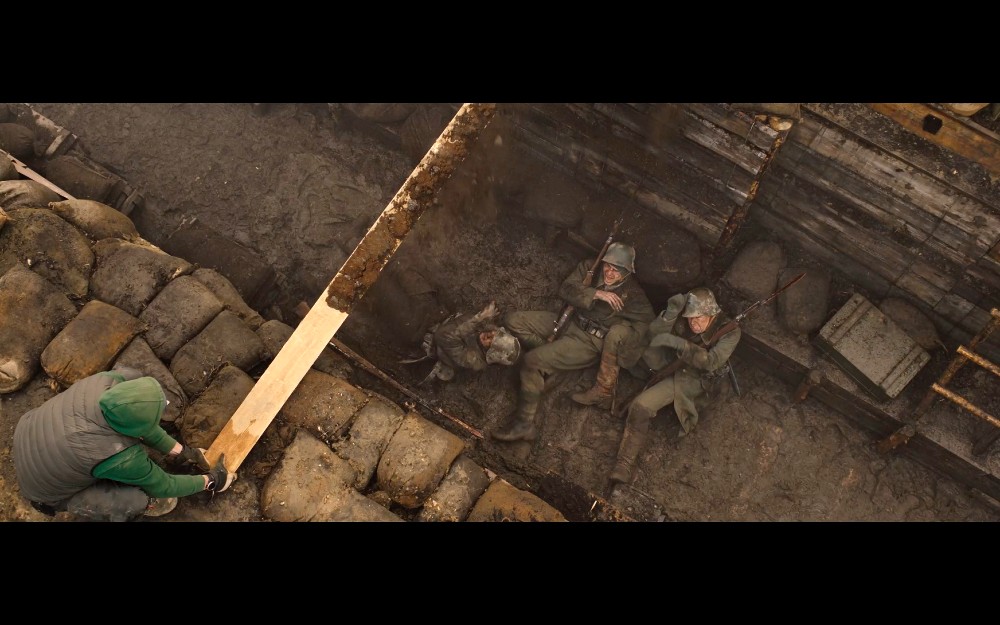
BTL: You mentioned tanks earlier, and there’s this amazing scene where the tanks go over the soldiers in the trenches. I’m not sure if there were actors underneath them, but what was involved with creating those scenes? Were all the tanks created using visual effects?
Petzold: No, we had a tank, because there’s a lot of close interaction with the tank, so you want to have something on set. We did a mock-up with some tank from the ’70s that they built this old Saint-Chamond shell on top of it. The problem was that, like everything else, like our gear and everything, they got stuck a lot. We were able to drive a few yards, and basically, all the other mid-ground to background tanks that you see, they’re animated.
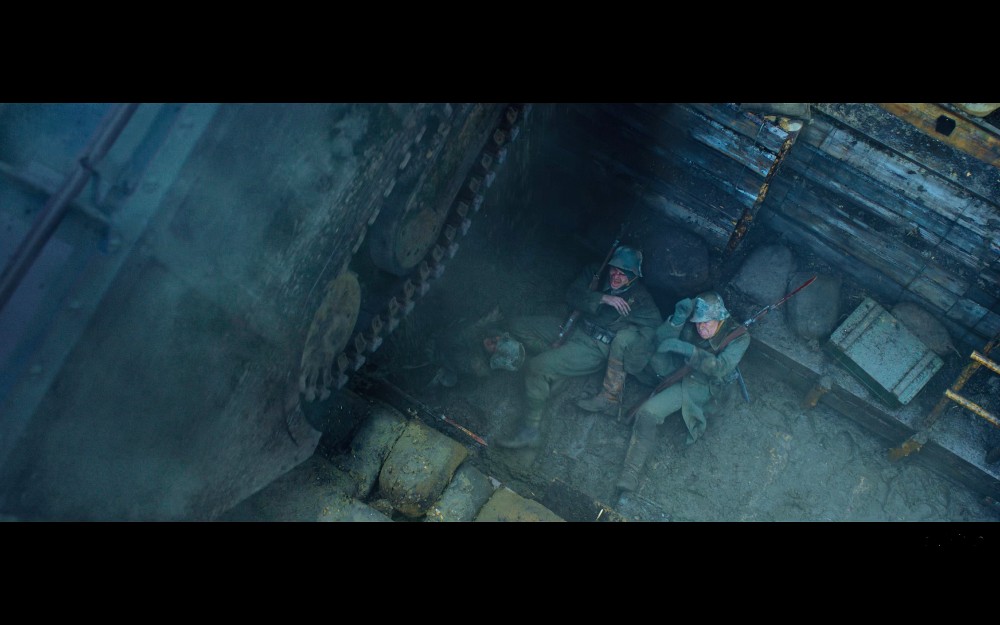
BTL: You mentioned the different vendors, so how did you decide which vendors would be good for each element that was needed? How did you split up all the VFX shots?
Petzold: You sort of cast them like actors, really. Every shop has a specialty. MPC is good at that [and] Weta is good at that, and then also, of course, in the back of your mind, you have to think about budget a little bit, too. I chose UPP, A.) because there was a relationship, and B.) It’s Victor Miller’s shop, and we like to tinker. There are a lot of shops that can only work on the computer because they don’t have their own stage anymore. UPP is a shop where you could do it in the computer, you can simulate a flame in CG, or you can go, “You know what? Let’s just drive over to the stage and play with fuel.” There are a lot of details like that in the film, like when there’s one really short shot when you can see down the barrel of a tank cannon when it goes off. That explosion, it’s a seven-frame event. Any other shop that doesn’t have a stage would go into Houdini and just do a fire flash and add particles and all that. We actually went through the trouble of shooting it and stuffing black powder in a steel pipe just for that to be authentic.
All Quiet on the Western Front is now streaming on Netflix. It will be available on a special Collector’s Edition Blu-Ray on March 20.





